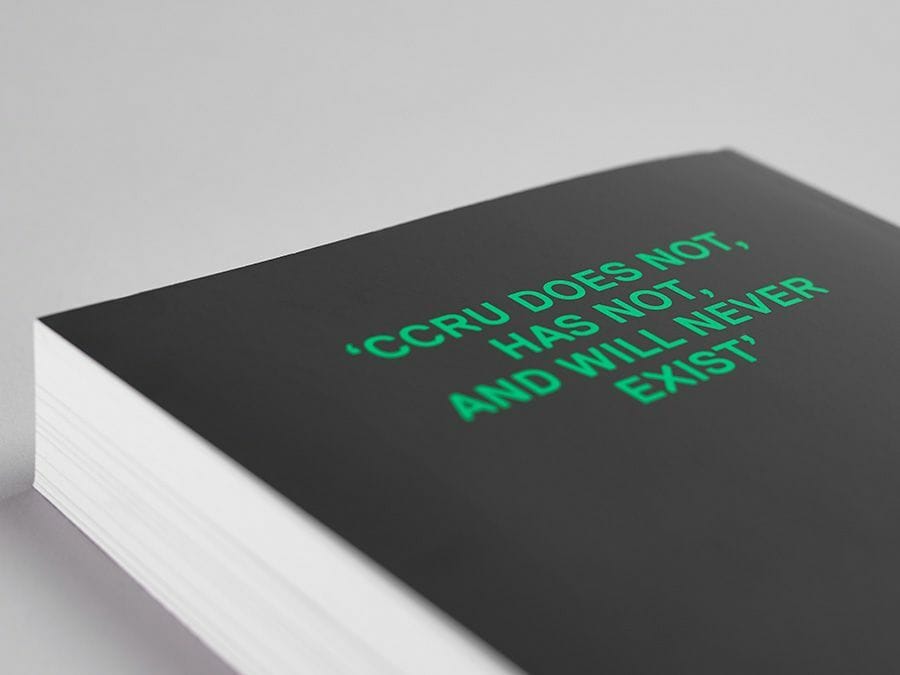
The endpoint of the digital revolution is cyber-hype techonomics, the confluence of cyber-hype (the digital coordination of collective desire around the promise of a future outcome) and techonomics (the already established confluence of technology and economics). That's according to the Cybernetic Culture Research Unit, or the CCRU.
“The primitive comes last, at the end, which is Cyber-hype techonomics. The so-called ‘new-economy’—indexed by the nova-bubble mania of the American stock-market–is no different in its diagrammatic abstraction to the hyperstitious practices of the Plateau of Leng, relics of lost Lemuria, from which the Bon sorcerors of ancient Tibet assembled their dread cult. Alan Greenspan calls it ‘irrational exuberance…’” (“Review of Ccru's Digital Hyperstition,” Writings 1997-2003)
In the excesses of pre-digital market dynamics (stock market bubbles), the CCRU foresaw a pattern that would only be radicalized by digital technology. Digital technology would not bring market dynamics to a new place, but an old place. Technological acceleration brings us back to the beginning, to primitive forms—primordial, terrifying, Lovecraftian forms.

Writings 1997-2003 (Urbanomic)
“Whatever or however it is called, Cyber-hype libidinally invests its own semiotic, propagating fictional quantities, tagging artificial agencies, and making itself up as it goes along, whilst dissolving production into cultural synthesis. As it gets cheaper it gets harder to stop, running-away off itself, and into abstraction-catastrophe, a self-assembling terrestrial destiny, softening-up social reality for flat take-over by the Cyber-hype entity... Hyper-seizure.”
This is not merely poetic flair: It's an engineering diagram. According to the CCRU, cyber-hype has three essential ingredients:
Establish a semiotic or a system of signs (numbers, agencies, etc.).
Invest the semiotic with libido or, essentially, art (libidinal investment is the charismatic or seductive signature of art that works).
Dissolve production into synthesis. Merge the discontinuous, systematic, Apollonian work of the individual creator transcending the everyday, into the continuous, fragmentary, Dionysian work of the group creating immanently through the everyday.
Creating your own nation with its own currency is now easier than ever (“it gets cheaper as it gets harder to stop,” “a self-assembling terrestrial destiny”), but the variety of both legitimate use-cases and nonsensical scams overclocks human cognition (“abstraction-catastrophe”). Is this not precisely the state of crypto, DeFi, and DAOs at this moment?
There’s Bitcoin, but also hundreds of “dog coins”—from Doge, to Floki, to Marshall Rogan Inu. There are outright scams and there are billion-dollar software protocols run by DAOs. Hyper-seizure.

To learn more, see this expanded discussion of the present themes
If you question the premise of my reading, notice that the CCRU mentions explicitly the splintering of currency-tokens:
When hyper-cybernetics kicks-in the ‘cyber-’ prefix means nothing anymore. It culturally disorganizes itself into diagrammatic splinters and libidinal triggers, brands, jargons, virus, currency-tokens and traffic-signals, fragments of marketing strategy gone feral, cyberpunk fictional brands or improper names, markers of meaningless involvement, the pass-words of machinic delirium...
The DAO is the socio-technical vehicle that rationalizes and formalizes cyber-hype logic. A DAO combines branding, jargon, currency, user IDs, crypto wallets, and currencies. For what? It doesn’t matter, as long as the machine runs. Of course, one way to make the machine run is to have a collective goal that matters, but another way to make the machine run is to maximize profit and backfit a concept, symbol, or pseudo-value to feel like it matters. The world is filling with both kinds of machines, and many machines between the two.
Think about the mnemonic seed phrase for your crypto wallet—the string of meaningless words that secure your sovereignty over your assets. That’s a password of machinic delirium—we protect and type these words, which are meaningless to us, yet meaningful to the machines.
It is widely believed that Nick Land wrote The Dark Enlightenment after reading Curtis Yarvin, but there is a case to be made that Nick Land and the CCRU issued the instructions for Urbit before Yarvin conceived it. Referring to their own work, they write:
“The evident cybergoth contamination throughout suggests it has been spawned in Crypt-connected hyperlink-labyrinths, beneath and between the net, a positive nonplace lurking beyond the threshold…
Or perhaps the CCRU lore dating back to Warwick in the 1990s was generated by an Urbit group in the 2010s: Did Urbit create the CCRU, retroactively? Will we ever find out? And how would we know?